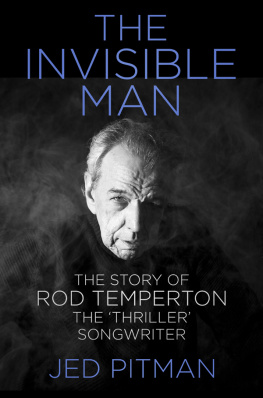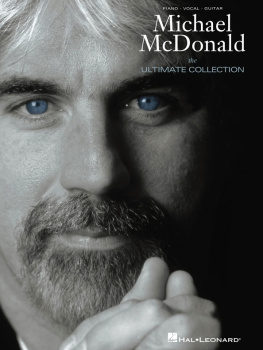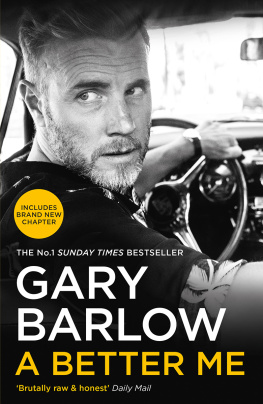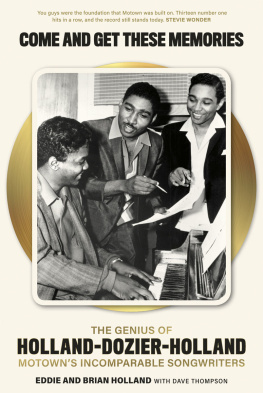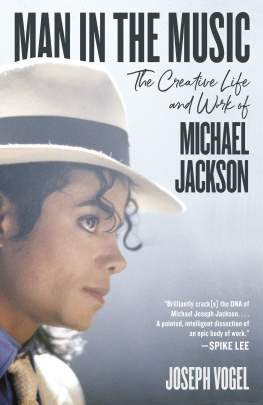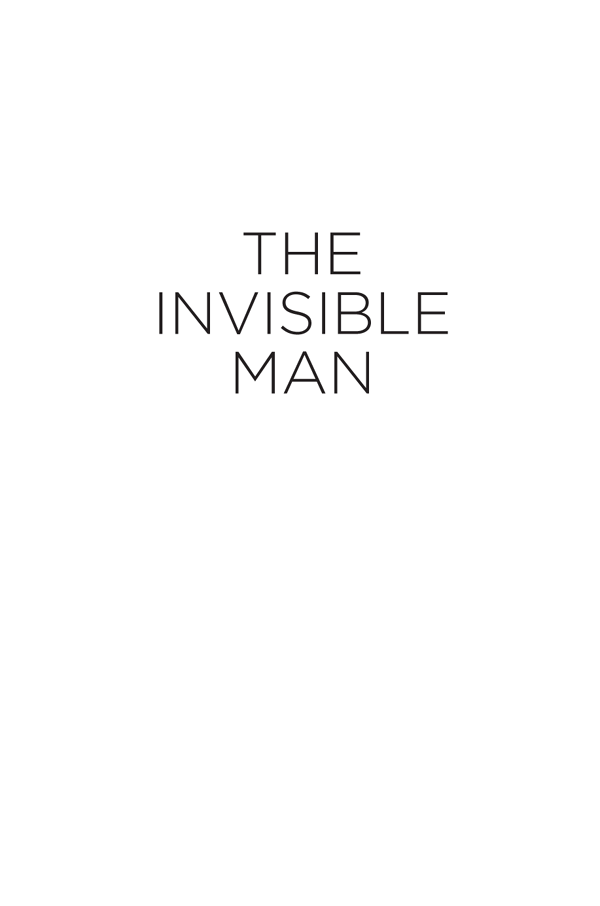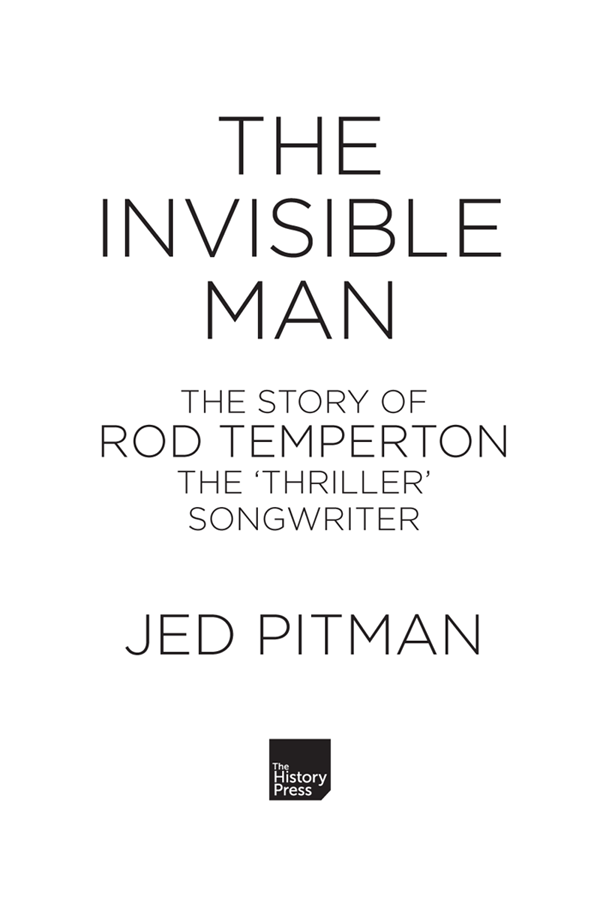First published in 2017
The History Press
The Mill, Brimscombe Port
Stroud, Gloucestershire, GL5 2QG
www.thehistorypress.co.uk
This ebook edition first published in 2017
All rights reserved
Jed Pitman, 2017
The right of Jed Pitman to be identified as the Author of this work has been asserted in accordance with the Copyright, Designs and Patents Act 1988.
This ebook is copyright material and must not be copied, reproduced, transferred, distributed, leased, licensed or publicly performed or used in any way except as specifically permitted in writing by the publishers, as allowed under the terms and conditions under which it was purchased or as strictly permitted by applicable copyright law. Any unauthorised distribution or use of this text may be a direct infringement of the authors and publishers rights, and those responsible may be liable in law accordingly.
EPUB ISBN 978 0 7509 8329 7
Original typesetting by The History Press
eBook converted by Geethik Technologies
CONTENTS
PROLOGUE
Growing up in the 1970s with two older brothers, Nick and Nigel, my family home was often filled with music, the sounds and beats emanating from each room of the house, songs by T-Rex, Sweet and other darlings of glam rock and then punk and heavy metal, The Sex Pistols, The Clash and Motrhead.
Then, in 1977, while travelling to Cornwall on holiday in a Hillman Imp driven by my mother, for the first time on the radio I heard a song called Boogie Nights by a band named Heatwave. From the moment the sound hit my eardrums, I knew my life had altered. I had never taken in such a hook, such a groove, such melody and I was transfixed and then transformed.
On that holiday, I bought my first ever LP, Too Hot to Handle, the album including Boogie Nights. Every song matched the one I had first listened to just a couple of weeks before and soon my brothers choices at home were being drowned out by the songs of a man called Rod Temperton. I was 11 years old.
I knew nothing about the man, of course. On the back sleeve of the album cover was a photo of each member of the Heatwave band and I was confused as to how a man who looked more like an accountant could have penned such songs. He was the bands keyboard player too, and I immediately started to wish I had taken up music lessons at school.
The following year, I bought the follow-up Heatwave long player, Central Heating, and then in 1979, while all my friends at school were hooked into Blondie, The Cars and an emerging band called The Jam, I steadfastly stuck to what I liked, Heatwave. I would invite friends over and try to get them to understand what I understood this was music like no other, complicated harmonies and arrangements, hooks that could catch a shark and choruses that would live in my head, keeping me awake at night.
I knew I had fallen for the groove and it was a love affair that lasts still.
Other songs grabbed my attention none more so than Funkadelics One Nation Under a Groove and then Michael Jacksons Dont Stop Til You Get Enough. Again, on the strength of those singles, I saved up my pocket money, did a few bob-a-jobs and headed to the record store to purchase the LPs.
I remember to this day playing the opening track to the Jackson album Off the Wall. The long version of Dont Stop had me, but up next was a song that almost blew my mind. As it played, I headed over to the record player and watched for a few minutes as the vinyl spun round on the turntable. Song two was titled Rock with You and, to my ears, it had a hook that sounded like Heatwave. As the record spun, I could make out in brackets beneath the title of the song the songwriters name R. Temperton. Was this really the same man who had already grabbed me with the hits, Boogie Nights, Always and Forever, Too Hot to Handle and The Groove Line? How had that happened?
I took the record off the player to see if this Temperton had written any more tracks on the album. He had the title track and, for me, the best cut on the LP, Burn this Disco Out. They all had a similar kind of sound, a relentless rhythm that simply wouldnt let go. For weeks, I hardly played any other track from Off the Wall, just the three written by R. Temperton. I drove everyone around me quite mad and did some damage to the floorboards in my bedroom due to my appalling dancing.
By now, I had become an avid reader of the magazine Blues & Soul and in one edition there was an interview with this man, Temperton. I ignored the rest of what was within the pages and headed straight to the feature. I sat the rest of the day in shock. Yes, this man was the same who had written those extraordinary Heatwave hits and he had more on the way for a band called Rufus and Chaka Khan and the Brothers Johnson. But what stood out most of all was that he was from England, from Cleethorpes in Lincolnshire, not a million miles from where I was sitting.
By the end of the decade I had started to grow a decent music collection, every bit of money I had was spent in a black music store in Nottingham. All the stuff I had and listened to on the radio was black music from America, yet here I was now reading that my real hero was white and from Cleethorpes. I would bore everybody at school with this newfound knowledge. Nobody cared, nor did anybody believe me when both Rock with You and Off the Wall became enormous hits for Michael Jackson. At school, people would sing those and I would tell one and all who had written them. The general refrain was bollocks impossible.
From there on, I bought albums based on writers and producers, rarely on artists. Anything to do with George Clinton, Bernard Edwards and Nile Rodgers or Rod Temperton would soon find their way onto my turntable.
Of course, by 1983 everybody at school, all their friends and all the members of their families, some of whom werent even alive, had a copy of the Michael Jackson album Thriller, of which the subject of this book also penned the famous title track. Yet, as the years passed by there was rarely anything written about the man and what he had achieved and I just couldnt work out why. Did he really exist? Was it all a made-up story to hide the real identity of the man behind the hits that also included Stomp! by the Brothers Johnson, Give Me the Night by George Benson and Razzamatazz by Quincy Jones?
By the late 1980s and moving into the early 1990s, Rod seemed to have disappeared completely, bar a couple of new tunes on Quincys Jook Joint LP. I had moved onto other obsessions, until one day I entered the World Wide Web for the first time, on dial-up. After spending an age trying to work out what this thing was, I managed to find a search engine and the very first name I put into it was Rod Temperton. What had he been up to for all these years and, most of all, what songs that he had written had I missed out on?
Unbelievably, I could find nothing on him and it wasnt just because of my own technophobia. There was just nothing there at all. So, I formed a plan to find him and try to sell a documentary on him to the BBC. I cant have been the only person on the planet to have been so affected by his music over the years and so often I had argued with people that Jackson did not write Thriller every time it came on the radio at Halloween, but that it had come from the pen of a man from Cleethorpes.
It took me several years to find Rod, but in 2005, thanks to Neil, a friend of mine who had just set up his own production company, I did. Rod had hit the news online, a tiny article hidden in the music press with a story that he had just sold his back catalogue to London-based Chrysalis Records. Here was my chance. We arranged a meeting in a caf in central London, in Pimlico. Apparently, Rod had a house somewhere nearby.

